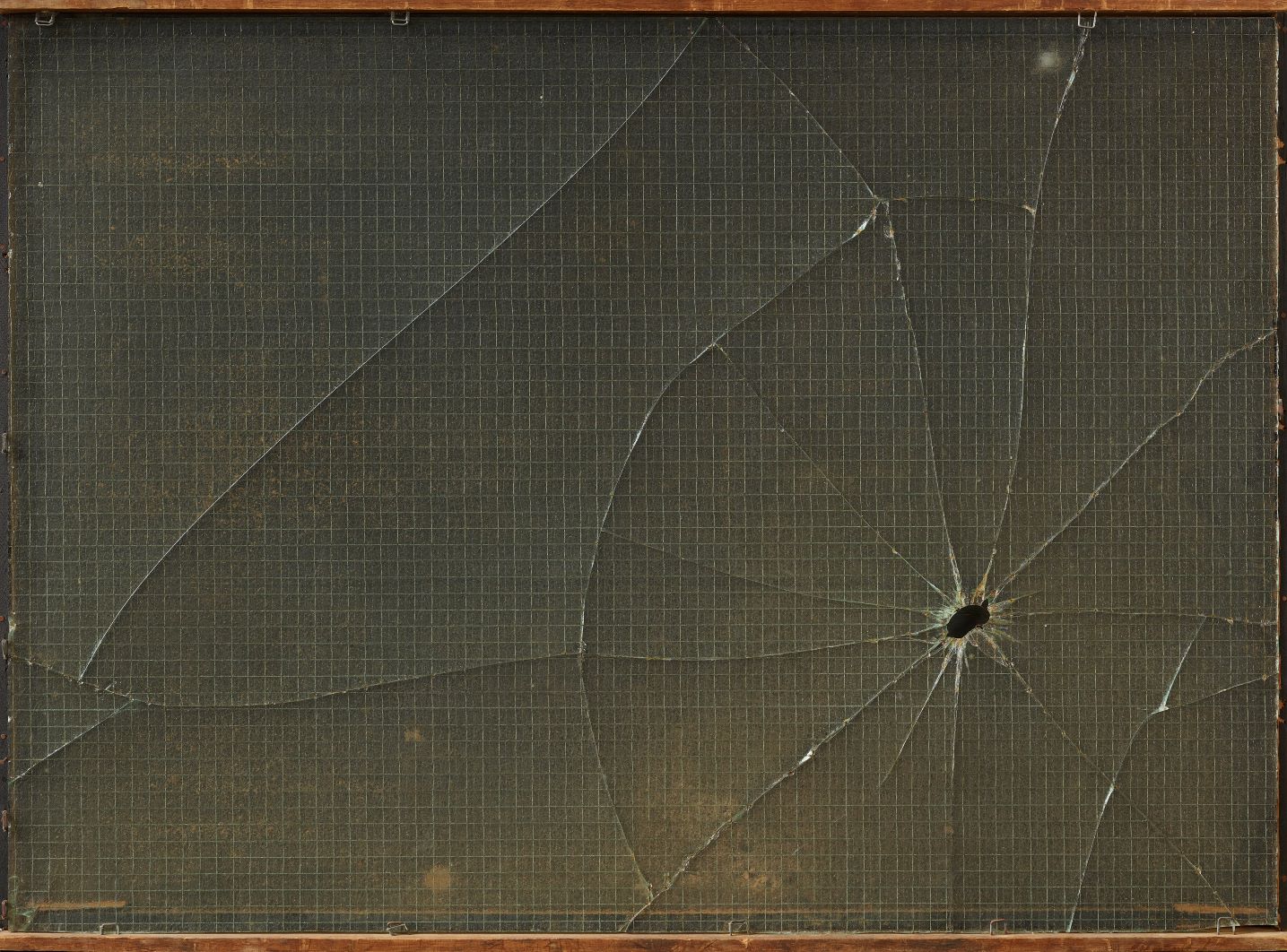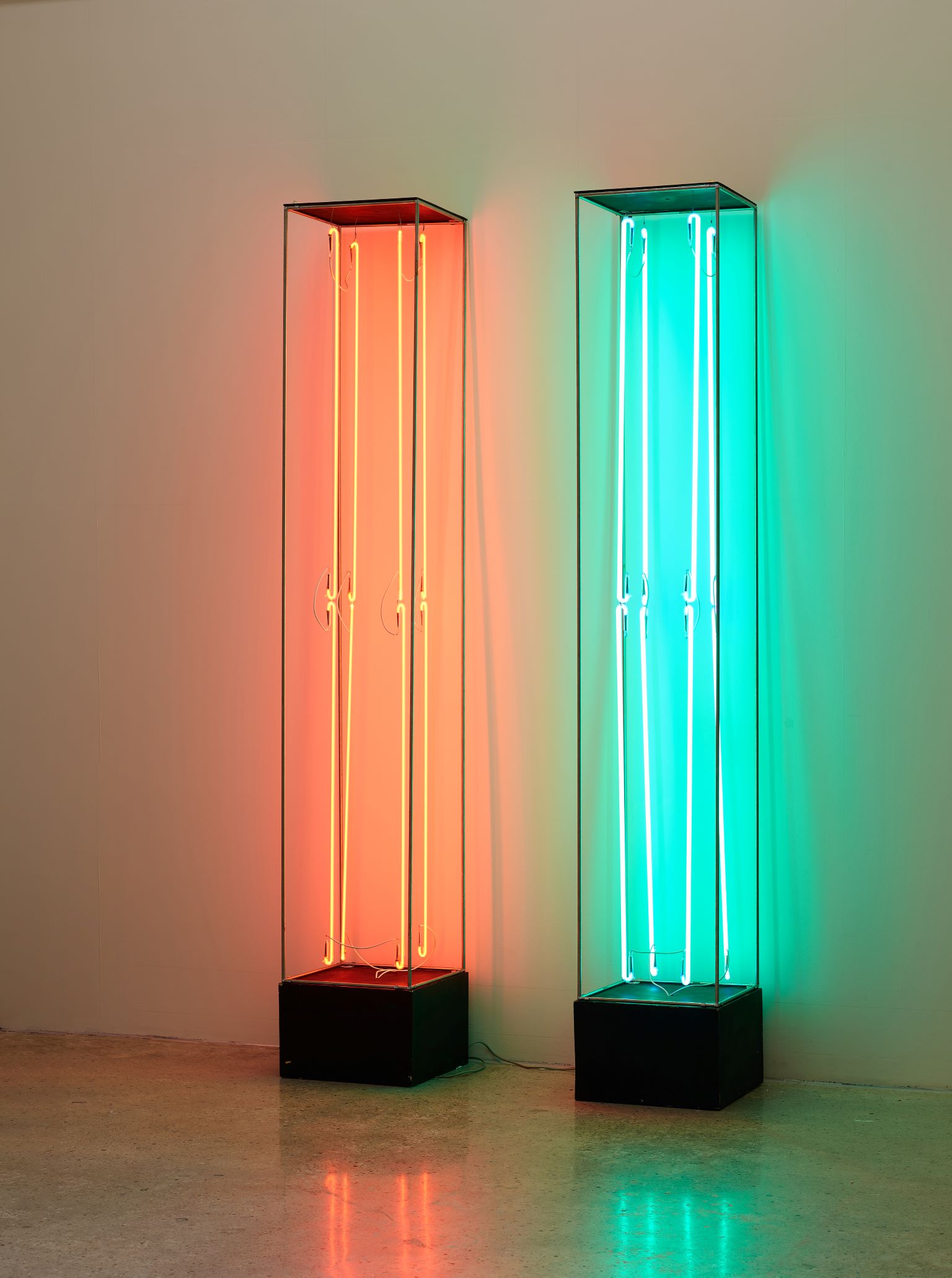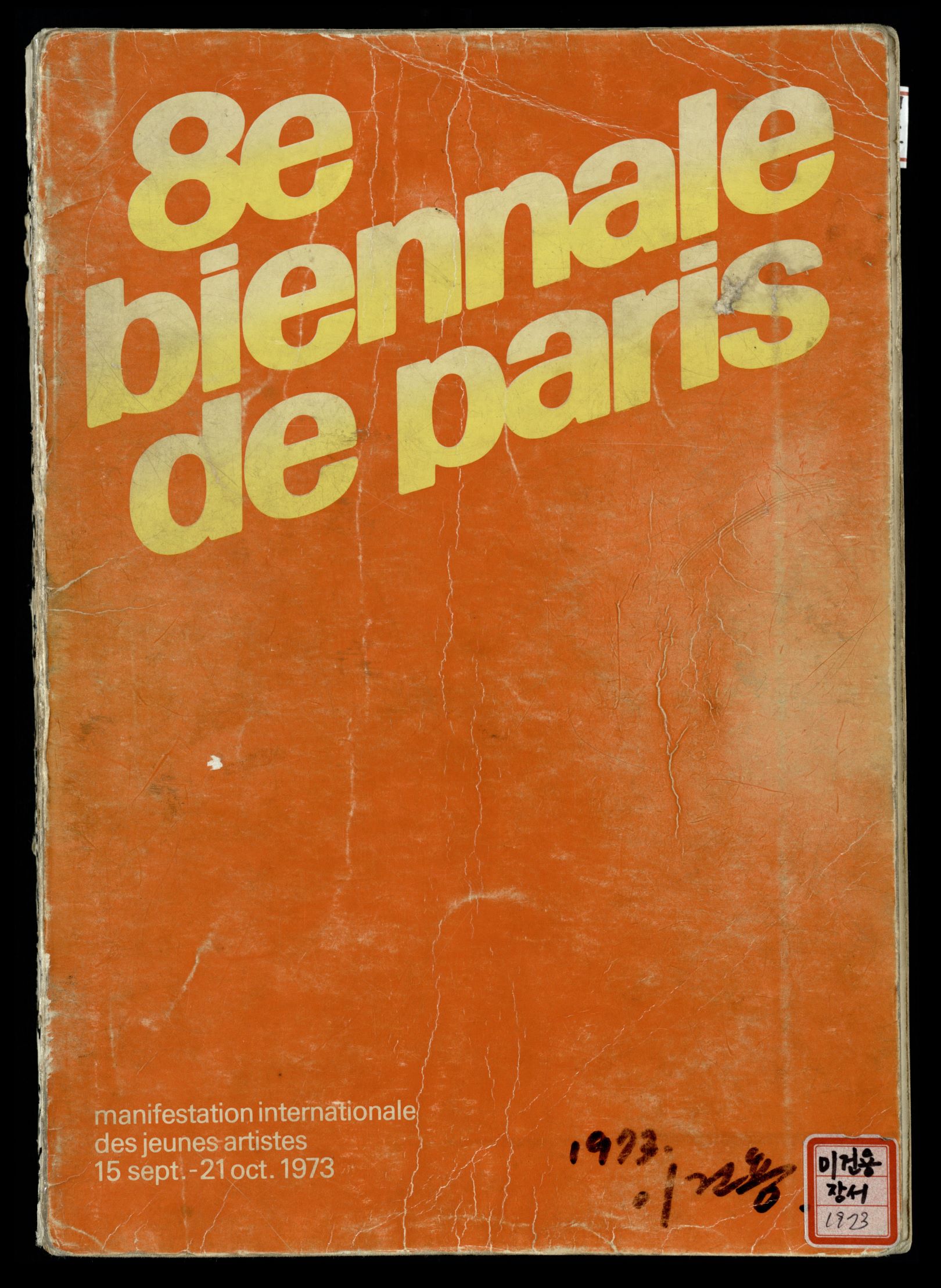
Quac Insik, Work, 1962, Glass on panel, 72×102cm. MMCA collection
Quac Insik
* Source: MMCA
Related
-

Sao Paulo Art Biennial
The Sao Paulo Art Biennial is an international exposition which started in 1951. The Sao Paulo Museum of Modern Art was the main venue for the event until 1957 when it moved to Ciccillo Matarazzo Pavilion. The exposition has the second longest history next to the Venice Biennale, and shares similar features with Venice, regarding the commissioner system and the use of themed exhibitions. South Korea expanded cultural exchange programs within the program since diplomatic relations were established in 1959 and began to officially participate in the Biennales after 1963. Kim Whanki, the chairman of the board of the Korean Art Association, served as the first commissioner in 1959, and seven artists including Yoo Youngkuk, Kim Youngjoo, Kim Kichang, Yoo Kangyul, Han Yongjin, Suh Seok, and Kim Whanki himself, submitted works to the exhibition. Their art pieces were previewed at the Korean Information Service Gallery in Seoul between June 14 and June 16. Over the last 70 years, Kim Bokyoung, Seo Seong-rok, Kim Youngho, Yoon Jinsup, and Oh Sang-Ghil have all been appointed as commissioners to the Biennale.
-

Experimental art
A genre of Korean art characterized by non-two-dimensional work such as sculpture, environmental installation and performance that emerged in the late 1960s and continued over the course of the 1970s. Art historian Kim Mikyung has analyzed the movement in the context of the political and social phenomena of the time and first coined the term experimental art to describe such work.
-

Korea: Facet of Contemporary Art
Korea: Facet of Contemporary Art was an exhibition held at the Tokyo Central Art Museum in Japan from August 16 through August 28 in 1977. The Japanese art critics Nakahara Yūsuke and Komura Masataka, and Yamamoto Takashi, president of the Tokyo Gallery, personally traveled to South Korea and selected participating artists and the works for the exhibition. Each of the selected artists submitted three to ten works. They included Quac Insik, Kwon Youngwoo, Kim Kulim, Kim Guiline, Kim Yong-Ik, Kim Jinsuk, Kim Tschang-yeul, Park Seo-Bo, Park Jangnyun, Suh Seungwon, Shim Moon-seup, Yun Hyongkeun, Lee Kangso, Lee Dongyoub, Lee Sangnam, Lee Seungjio, Lee Ufan, Chin Ohcsun, and Choi Byungso. The exhibition catalogue contained a preface by Nakahara Yūsuke and plates of works that the nineteen artists produced between 1976 and 1977. Korea: Facet of Contemporary Art was the largest exhibition on contemporary Korean art to be held in Japan since the Contemporary Korean Painting in 1968 at The National Museum of Western Art in Tokyo. Nakahara Yūsuke viewed that the works included in the exhibition are all based on black and white and that this common feature is not “anti-colorism” but each artist’s painterly interest in the unification of the background and “what is drawn,” the things other than colors, and their visualization of it in their own way. Following the exhibition Korea: Five Artists, Five Hinsek “White” held at the Tokyo Gallery in 1975, this exhibition enabled artists, who had worked in monotone painting, to participate in an international-scale exhibition as a group, contributing to shaping the perception that they represented Korean contemporary art.
Find More
-

Park Seo-Bo
Park Seo-Bo(1931-2023, real name Park Jaehong) belongs to the first generation of artists who received art education in Korea after Korea’s liberation from Japan. He was a leading figure in Art Informel and Dansaekhwa. He was born in Yecheon, Gyeongsangbuk-do Province. He majored in Western painting in the College of Fine arts at Hongik University and graduated in 1955. He served as a professor at Hongik University and the board president of the Korean Fine Arts Association (Hanguk misul hyeophoe). Park made his debut as a painter in 1956 through the Four Artists Exhibition that declared resistance to the National Art Exhibition and the established generation. After presenting abstract expressionist work completely different from the established art at the third Hyundae Fine Artists Association exhibition in 1958, he led the Art Informel movement until the mid-1960s. In the 1970s, he headed large-scale special exhibitions, including Independants, the Seoul Contemporary Art Festival, Ecole de Séoul, and Korea: Facet of Contemporary Art. He also played a key role in establishing “Dansaekhwa” as a style of Korean painting in the 1970s. His oeuvre can be divided into three periods. The first period (late 1950s–mid 1960s) is referred to as the Art Informel period, during which Park depicted the post-war situation with distorted and deconstructed human forms, dark colors, and rough matière, particularly in the Primordials series. During the second period (late 1960s–early 1970s), he focused on the modernization of tradition, presenting optical and geometric abstraction with five colors representing the five cardinal directions as the dominant compositional element under the thesis of hereditarus. During the third period (1970s–2023), which is known as the period of monochrome painting, he presented the Ecriture series, in which performance was fundamental to his creation. The Ecriture series can be divided into two periods: before and after year 1982. In the former period, Park repeatedly applied milky oil paint to a canvas and before it dried, drew lines with a pencil or a tool with a sharp tip, thus leaving traces of this act on the canvas. In the latter period, he used water-based paints instead of oil-based paints in an effort to more directly capture his emotions with bright hues inspired by the colors of nature. Until his death, he sought to build the identity of Korean art through various methodologies within a single thesis of ecriture and elevated Dansaekhwa to an international level.
-

Paris Biennale
The Paris Biennale was an international art exhibition held at the Musée d’Art Moderne de la Ville de Paris from 1959 to 1985. The exhibition only accepted works from younger artists aged 20 to 35. Artists could submit to different categories, such as painting, sculpture, print, and drawing as long their works were created within the four years prior to submission. Unlike other Biennales, the Paris Biennale did not award any prizes. Instead, the committee selected specific works from each genre and offered grants and exhibition opportunities to the selected artists. Korean artists were invited to the first Paris Biennale in 1959, but they only began to participate from the second Paris Biennale in 1961. The committee of the Hyundae Fine Artists Association [Hyeondae misulga hyeopoe], delegated by the Korean Minister of Education, selected participating artists, such as Chang Seongsoun, Chung Changsup, Cho Yongik, and Kim Tschang-yeul for the second; Park Seobo, Youn Myeungro, Choi Kiwon, Kim Bongtae for the third; and Chung Sanghwa, Ha Chonghyun, Jeong Yeong-il, Lee Yangno, Choi Manlin, Park Chongbae, and Kim Chonghak for the fourth. However, after the seventh Biennale in 1963, the Korean Artists Association [Hanguk misul hyeopoe] began to question the fairness of the selection process, and the committee began to invite public submissions from the eighth Biennale onward. The Paris Biennale became a new turning point for Korean artists of the 1960s Art Informel generation by providing an opportunity for them to experience and experiment with new styles.






